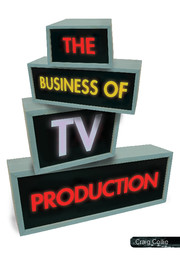Book contents
- Frontmatter
- Contents
- Preface
- Diagrams and tables
- Abbreviations
- Part A Opiate of the people: the television industry
- Part B Massage parlour: development and funding of a project
- Part C Riding the tiger: management of the production
- Chapter 12 Commencement of pre-production
- Chapter 13 Documentation and office systems
- Chapter 14 Crew, equipment and facilities
- Chapter 15 Casting, rehearsal and performance
- Chapter 16 Locations
- Chapter 17 Travel arrangements
- Chapter 18 Drafting the production budget
- Chapter 19 Scheduling the shoot
- Chapter 20 Preparing studio and outside broadcast productions
- Chapter 21 Management of the shoot
- Chapter 22 Management of the production budget
- Chapter 23 Post-production through to delivery
- Part D A nod to the gatekeepers: the environment of television
- Index
- References
Chapter 20 - Preparing studio and outside broadcast productions
Published online by Cambridge University Press: 05 June 2012
- Frontmatter
- Contents
- Preface
- Diagrams and tables
- Abbreviations
- Part A Opiate of the people: the television industry
- Part B Massage parlour: development and funding of a project
- Part C Riding the tiger: management of the production
- Chapter 12 Commencement of pre-production
- Chapter 13 Documentation and office systems
- Chapter 14 Crew, equipment and facilities
- Chapter 15 Casting, rehearsal and performance
- Chapter 16 Locations
- Chapter 17 Travel arrangements
- Chapter 18 Drafting the production budget
- Chapter 19 Scheduling the shoot
- Chapter 20 Preparing studio and outside broadcast productions
- Chapter 21 Management of the shoot
- Chapter 22 Management of the production budget
- Chapter 23 Post-production through to delivery
- Part D A nod to the gatekeepers: the environment of television
- Index
- References
Summary
Television began making its programs using multiple cameras in a television studio. It saw a golden era in the 1960s with studio-based variety and sitcom, but with the development of lightweight field recording equipment and sophisticated post-production, most program-making activity is now on location in single-camera production. The ease of operation of modern cameras and editing has negated much of the cost and efficiency advantage of multi-camera production. However, live programs, apart from live news crosses, still require multi-camera coverage. The mobility of television's recording equipment has enabled it to cover live events, particularly sporting events, on location at a high level of technical and production sophistication. Central to its production is an outside broadcast (OB) van, basically a studio on wheels. This is not an innovation in itself, since OB production has been with television from the start, but it has progressed considerably from the early clunky units.
The approaches to development and pre-production already covered will apply in one form or another to studio and OB production. The concept still has to be developed into a fleshed-out proposal, but most studio and OB programs are produced by the network that will broadcast them, even if they contract out the production. Funding may not be outsourced from other broadcasters, distributors or investors, but found from within the network's budgeting, although it may be offset by an interest group underwriting some of the cost. For commercial broadcasters, the estimated advertising revenue that a program might attract determines its funding viability.
- Type
- Chapter
- Information
- The Business of TV Production , pp. 310 - 324Publisher: Cambridge University PressPrint publication year: 2007



